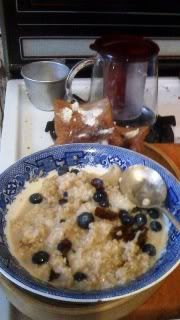
Let's sit in the front room, where the wintry light is bright, even if this drafty old house does let in an occasional sigh from the west wind...
Today I wanted to share my collection of vintage pattern books from Peace Dale Yarns with you. I wrote a Little Bit about them in 2008 - in January - so this snowy time of year must bring these booklets back to my mind. I wonder why?
Peace Dale, founded in 1801, was a wool processing mill in Peace Dale, Rhode Island. Peace Dale has a fascinating history and was named after the wife of the founder, Mary Peace - married to Rowland Hazard in the late 1790's. It was Hazard who began the wool-carding mill in 1803, putting out the carded wool to be hand-spun in area homes. He had the yarn hand-woven into cloth by local weavers and shipped this wool far and wide. From the History of Peace Dale: "Hazard purchased the mill privilege outright in 1812, and invested in experimental machinery including primitive power looms. By 1815, he ran a small, fully integrated manufacturing operation, going from raw material to finished goods. It is said to have been one of the first such textile plants in America. Thus began Peace Dale, a mill village created by over four generations of the Hazard family."
The Hazards were Quakers - "Friends" - and sought to create a village that improved the social order and reflected their philosophy of philanthropy. Along with the sobriety, unity, and an "air of elevated amenity" encountered in their village, the Hazards - Friends into the mid-nineteenth century - were said to have about them "a seriousness, ambition, and commitment that reflected Quaker attitudes".
During these early years - the early to mid 1800's - Peace Dale remained very small. In the early 1820s there were only 30 inhabitants, the wood-frame mill buildings, five dwellings, and a store. In 1840, the mill burned down. The sons of Rowland - Isaac and Rowland G. - rebuilt the mill, this time as a stone building and added the newest in hydropower technology of the 1800s. They began manufacturing woolen shawls instead of bolts of cloth and gained a substantial reputation as the producers of the highest quality goods.
Here is a line drawing of the Wool Mill, from 1920 - the frontispiece of one of the Yarn Pattern Books:
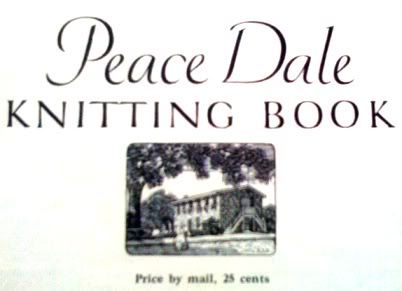
There is more to the history of Peace Dale, including Rowland G's support of abolition in the Civil War, even though a pacifist Quaker, through the writing of essays and support of organizations that sought to abolish slavery. His sons, John and Rowland II, carried on the family business into the late 1800's and Rowland II had a big impact on the business and the village, when he used his financial resources and abilities as an architect to establish offices, a store, a post office, and a public hall. Over the years, he built over half of the buildings of Peace Dale RI, a dale founded for love of his grandmother, Mary Peace.
My collection of Peace Dale booklets span 1920 through 1924 and includes mail order yarn samples and advertising pattern samples. I'd love to have everything they printed, but even this small collection was hard to find!

Peace Dale produced many yarns for their cloth, their shawls, and for hand knitting. These yarns were available by mail for a very small fee. I have a sample book mailed to Mrs. J. E. Bassill of E. Bakersfield, California on April 3rd, 1923 that includes yarn samples for 13 different types of knitting yarns.
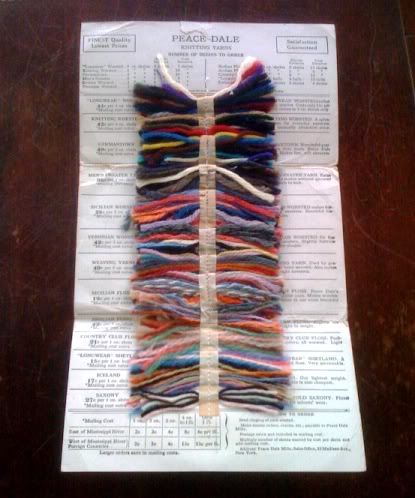
These were (from the top down):
Longwear Worsted - "Longwear Worsted is what it's name implies." 44 cents per 4 oz skein
Knitting Worsted - A splendid yarn for everyday sweaters" 42 c per 2 oz skein
Germantown - "Wonderful quality yarn that made Peace Dale famous. Makes fine, soft sweaters." 49 c per 2 oz skein.
Men's Sweater Yarn - "Extra heavy and makes warmest garment it is possible to knit" 98 c per 4 oz skein.
Sicilian Worsted - "Makes fairly heavy sweaters. Beautiful lustrous colors." 38 c per 2 oz skein.
Veronian Worsted - "for fine quality sweaters. Slightly lustrous in delicate shades". 42 c per 2 oz skein.
Weaving Yarns - "Used by professional hand weavers. Also makes light weight sweaters." 49 c per 2 oz skein.
Sicilian Floss - "Peace Dale's most popular yarn. Makes wonderful sweaters in our most beautiful colors." 19 c per 1 oz skein.
Arolian Floss - "Slightly lustrous, light in weight." 42 c per 2 oz skein.
Country Club Floss - "Fashionable colors , all worsted. Light weight." 21 c per 2 oz skein.
Longwear Shetland - "A cheap, light floss. Very serviceable." 15 c per 1 oz ball.
Iceland - "Our lightest weight. Used double is also cheapest." 17 c per 1 oz skein.
Saxony - "Three-fold Saxony finest quality for infants' wear." 27c per 1 oz skein.
Mailing costs were from 2 cents an ounce to 13 cents a pound. The yarns themselves sold for from 15 cents per 1 ounce ball for "Longwear Shetland" to 98 cents per 4 ounce skein for "Men's Sweater Yarn". There is also a chart showing how many balls or skeins to order for different items, like slip-on sweaters, and coat sweaters (cardigans).
I chose the two books I'm going to show today because they are the winter editions, as you can see. Passion for winter sports was great in the early 1920's and my little New England state saw a great influx of sporty people in those years to stay in northern quaint towns with chalet-type dwellings for skiing, and snow-shoeing, and skating, and ice-fishing, and winter hiking, as well as for bonfires on snowy slopes with toasty hot drinks!
The first book I want to show you is the 1923. The drawing on the cover says it all - with the pole-free skier gliding down the hill and her group of friends at the bottom cheering her on. She's dressed in woolen plaid knickerbockers with two pairs of handknit socks, and handknit hat, turtleneck sweater, scarf, and guantleted gloves. I doubt if that outfit would be warm enough for our actual skiing weather conditions, but it certainly is stylish!

Inside the booklet are many indoor and outdoor sweaters (called coats) as well as the cover outfit.
Coat Sweater Trimmed in Cross Stitch:
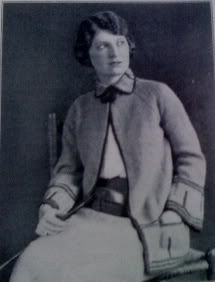
The Lake Placid Skating Set (though shown skiing on the cover!):
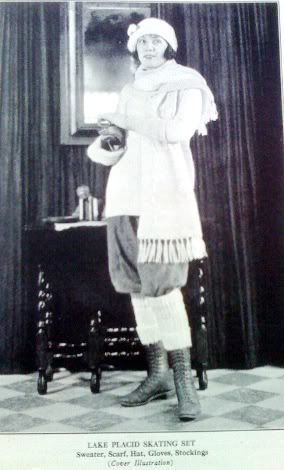
Sleeveless Golf Slip on - " This is a popular sports sweater, also favored for wear under coat to give extra warmth". (I like the useful pockets):
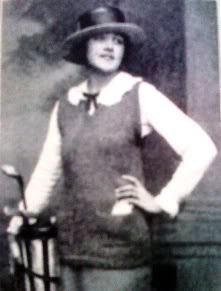
And, to match your own Lake Placid set, one for your favorite child's doll:
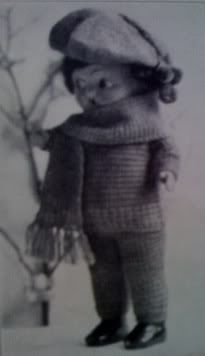
The earlier booklet, from 1922, was more versatile with patterns for women, men, teenagers, children, babies, elders, and even something for the home:

The first sweater is not even really for a winter sport, unless for those well known 1920's Rhode Islanders in their sea-side mansions with indoor tennis courts (think "The Great Gatsby"):
The Alma-Mater reads, "develop this in school or college colors and have something new, something absolutely different! Just the thing to wear on the campus or at class games when you want to "show your colors!" It takes online a little time to knit and in addition to being good-looking is warm and practical.":
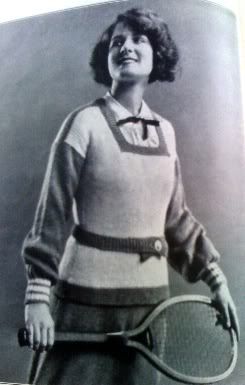
The second, an attractive sweater with the U-neck that was becoming so popular, is describes as a golf sweater:
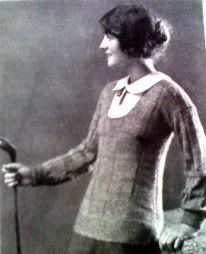
Here is a man's sweater - check out the length! It could double as a dress! "A splendid sweater for cold days - warm, wooly, and good-looking! Just the sort of sweater to bundle into when the thermometer hovers down around zero! Very handsome of red Heather, or Navy, or Dark Green Heather."
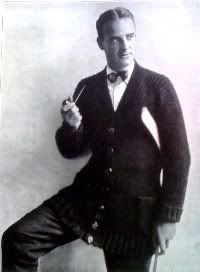
And this vest, which I think I actually might make - "Sleeveless V-Neck Slip-on, A perfectly splendid model (why are men always described as "splendid" in the 20's?) for the man with a liking for sports! (as opposed to a liking for other things?) The absence of biding sleeves allows a free, unhampered swing of the golf club or the tennis racket. Also a very good sweater to wear under a coat when extra warmth is desired. Colors suitable for men are White, Navy, or Camel." (They obviously never saw men in pink, lavender, or bright blue as we do now. Sorry - these goofy old photos of the men are making me a bit punchy!).

Also tucked into this 1922 booklet was a page of advertising for the "Cool o' the Evening" Sweater.
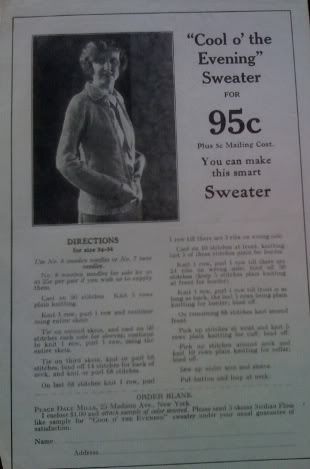
I believe that the "cool o' the Evening" was a song in the 1950's, but I haven't been able to find any reference to it in the 1920's, so I don't know why Peace Dale put it in quotes like that. The ad says that for 95 cents, you can make this sweater - plus the cost of postage. By enclosing $1.00 and attaching a sample of the color wanted, Peace Dale would send you 5 skeins of Sicilian Floss to make the sample illustrated:
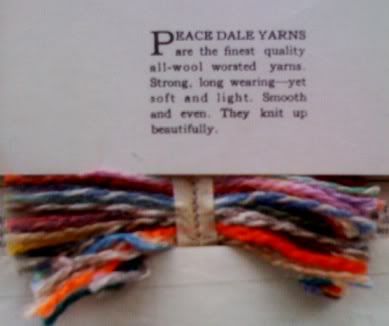
The "Cool o' the Evening" Sweater

DIRECTIONS
Use no. 8 wooden needles or no. 7 bone needles.
(Peace Dale sold the needles for 25 cents a pair)
(BTW - Plain knitting = garter stitch. )
Cast on 50 stitches. Knit 5 rows in plain knitting.
Knit 1 row, purl 1 row and continue using entire skein.
Tie on second skein, and cost on 50 stitches each side for sleeves; continue to knit 1 row, purl 1 row, using the entire skein.
Tie on third skein, knit or purl 68 stitches, bind off 14 stitches for back of neck, and knit or purl 68 stitches.
On last 68 stitches knit 1 row, purl 1 row till there are 3 ribs on the wrong side.
Cast on 10 stitches at front, knitting last 5 of these stitches plain for border.
Knit 1 row, purl 1 row till there are 24 ribs on wring side; bind off 50 stitches (keep 5 stitches plain knitting at front for border).
Knit 1 row, purl 1 row till front is as long as back, the last 5 rows being plain knitting for border; bind off.
On remaining 68 stitches, knit second front.
Pick up stitches at wrist and knit 5 rows plain knitting for cuff; bind off.
Pick up stitches around neck and knit 10 rows plain knitting for collar; bind off.
Sew up under arm and sleeve.
Put button and loop at neck.
~~~













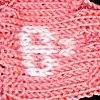

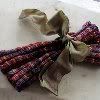

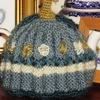



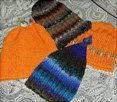


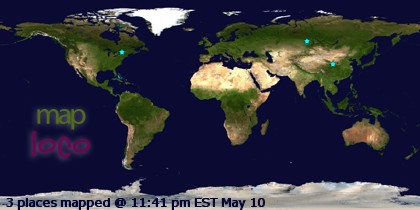
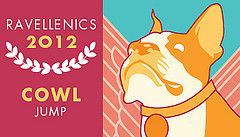
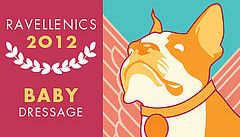

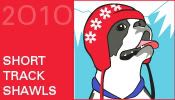




6 comments:
The directions for the "Cool o' the Evening" Sweater sound fairly easy. Do you think that you will make it? I love these old patterns that you find and post.
I don't know, I'm really into vests right now and might make the two I showed here. The vintage directions of the 20's are pretty simple. The sweater is knit in a "T" shape, with the sleeves as the cross-bar, and then the two fronts added. Then you fold the sweater down and sew the under-arms. That was their version of "one piece" instead of knitting in the round.
A very interesting post. You are so lucky to have yarn samples. It is so much easier to imagine the finished object.
What a lovely post- thank you so much for sharing. And despite the fact that it is 7pm- I'll take that breakfast right now!:) Nadine
Terrific post - fascinating story and so nice to have so much complete history. The photos of the patterns are wonderful, too,(great hair and other fashion details) and thanks for the free one. I love the minimal directions - such a nice change from the "pages" of contemporary patterns. Nice to think, too, that the "alteration" knowledge was still assumed.
I am in love with the man's sweater... Very professorial :-)
Also, what a sweet morning that would be, with you.
*tender robed embrace*
Post a Comment